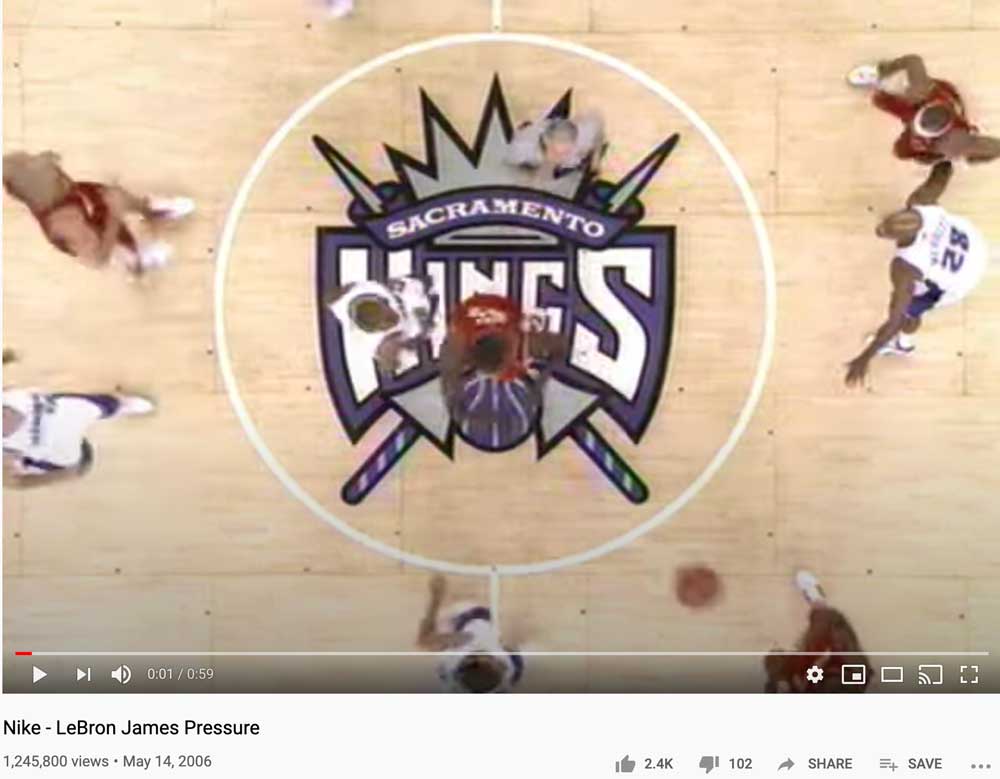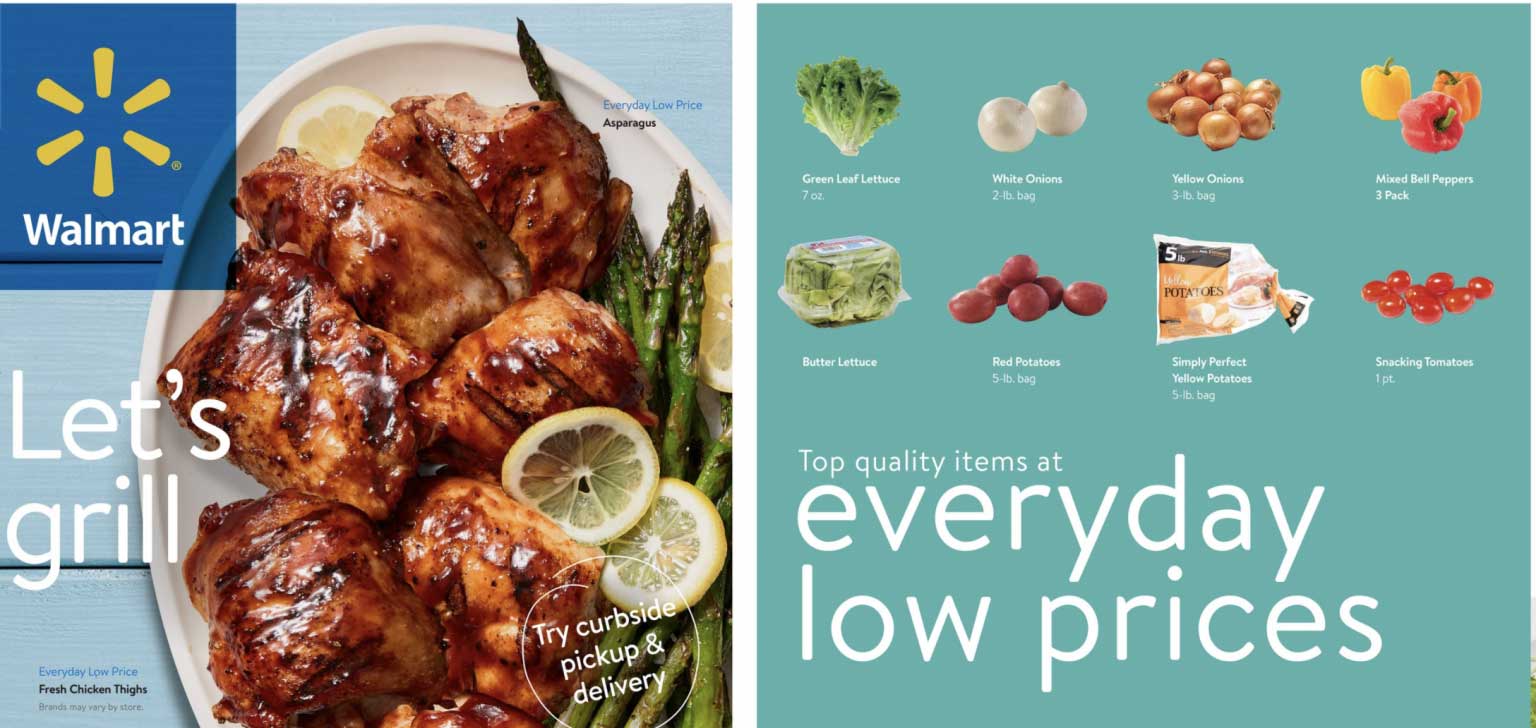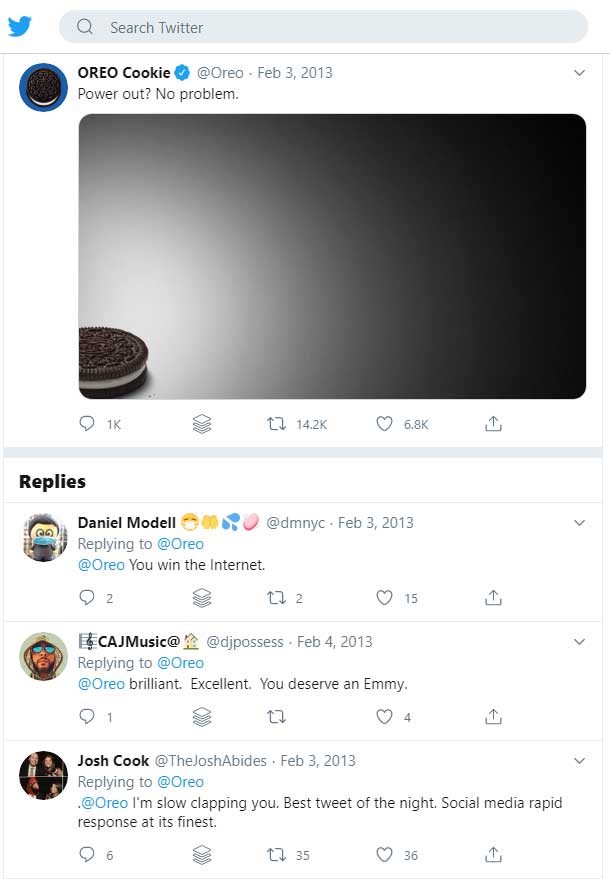Relationship marketing is all about building deep, personalized connections with your customers. Instead of focusing on short-term sales and transactions, relationship marketing focuses on increasing customer loyalty, promoting customer retention, fostering engagement, and creating long-term relationships with customers.
It’s crucial that you build a relationship that allows your audience to connect with your business, and a customer experience where people feel like their specific needs are being answered. Like all relationships, relationship marketing is built up in levels or phases. In the case of relationship marketing, there are five levels.
In this article, we’ll cover the five levels of relationship marketing and how they apply to your business. We’ll break down plenty of relationship marketing examples from marketing campaigns that use each level to help you build long-lasting customer relationships.
The 5 levels of relationship marketing strategies
There are five different levels of relationship marketing. These levels are sometimes called hierarchical relationship marketing strategies, or types of relationship marketing. The five levels of relationship marketing are:
- Basic marketing
- Reactive marketing
- Accountable marketing
- Proactive marketing
- Partnership marketing
Why is it so important to understand the five levels? Knowing them can help identify where you are in building a customer relationship, and the next steps you can take to further this relationship with customers. Using them correctly can help you increase your customer lifetime value, one of the most important metrics for your business’ success.
Level 1: Basic marketing
Basic marketing can be compared to traditional marketing. Think of it as the Mad Men marketing approach: It’s marketing that simply aims to entice the customer to buy. It’s direct selling, and doesn’t include following up with customers after they purchase a product or service. There’s no communication or customer feedback involved. Basic marketing is when a business sells simply for the sake of making money (which is not necessarily a bad thing).
Examples of basic relationship marketing
This Nike commercial is one example of basic marketing. It features LeBron James, who doesn’t do anything for what seems like a lifetime. Eventually, he laughs and “Just Do It” appears on the screen, followed by a blank screen to end. The message is simple: Whatever sport you are interested in, just do it with Nike.
This ad reels you in with a simple message, price, lifestyle, and promotion. It doesn’t get much more basic than that, and no customer interaction was involved.
Walmart also uses basic marketing. The brand maintains its low price strategy to attract new (and maintain old) customers. Most people who shop at Walmart choose to because of their extremely low prices. The company doesn’t use gimmicks, but just lets the pricing speak for itself. Walmart knows that, with basic marketing, it’s all about creating enough value to influence customers decision to purchase.
Even though basic marketing does its job, a better way to keep users excited about a product is to build a deep connection. The basic marketing strategy itself does draw in people, but is it enough? Can you use basic marketing alone for relationship marketing? Usually, you’ll have much greater success with the higher levels of relationship marketing, where you invite the user into some sort of conversation.
Level 2: Reactive marketing
At this level, you encourage your customers to supply feedback, be it a complaint, comment, suggestion, or random idea. There is some effort required to build a relationship with the customer; It’s about responding and interacting with customers when the situation or opportunity arises.
This is not your typical outreach marketing technique and is more inbound, focusing on after purchases reactions. You don’t resolve a specific problem when you respond to a customer with reactive marketing, though.
Examples of reactive relationship marketing
Starbucks maintains communication with their customers through emails showing appreciation and informing them of new offers, and even asks for ideas from their customers on their dedicated web page. The famous coffee chain markets their product by sharing short videos and images from their customers on Instagram. Reposting and regramming user-generated content on their own social media accounts creates more reactions .
And have you seen the Starbuck’s GIFs on Instagram? The strategy to get customers to share through word-of-mouth is even more encouraged with branded content.
Oreo capitalized on the 2013 Super Bowl blackout with a quick and timely tweet suggesting people “dunk in the dark.” This took advantage of trendy conversations in order to enhance their product, and encouraged their audience to reply and react.
During the 2013 horse meat scandal in Europe, betting company Paddy Power capitalized on the situation with witty content marketing. They created a cookbook entitled “6 delicious horse meat recipes” after the news went viral. This evoked a variety of responses from people, and the humor and creativity eventually led to massive conversations.
Photograph: Alan Betson / The Irish Times.
After the news headlined all over Europe, they followed their content marketing up with a stand outside Dublin Square that featured “Free Horse Burgers.” The purpose of the stand was primarily to evaluate the response from consumers, and encourage social media sharing. This is a wild example of reactive marketing, but it worked.
Level 3: Accountable marketing
As a business, it should be your duty to check on your customers shortly after a purchase. This promotes confidence in what you offer and proves to customers that you’re reliable. It also encourages customers’ honest opinions about your products or services, which creates a deeper level of relationship marketing. This is accountable marketing.
Businesses that use accountable marketing reach out to customers, remind their customers of their purchase, and share why customer feedback is important. Or, they might reach out and directly respond to customer feedback or known needs.
Accountable marketing starts to dive deeply into satisfying customers’ known needs and encourages a meaningful two-way conversation. With accountable marketing, you deliver on your promises, creating trust and providing good reasons for customers to choose you instead of your competitor.
Examples of accountable relationship marketing
Apple practices accountable marketing by offering training and awareness on health and environmental concerns through conversations with their customers.
GreenGeeks offers eco-friendly web hosting platforms as a service, a niche others don’t fill. The brand commits to offsetting three times the power they consume using renewable energy sources. But their accountability makes them stand out even more. Customers rave about GreenGeeks’ outstanding support and commitment to walking them through the website setup process.

While other similar companies may bury their customer service phone number, Zappos places it front and center on their website, inviting customers to reach out with any concerns. And when they do call, Zappos representatives listen actively, have deep conversations with customers, and go above and beyond. One representative sent flowers to a customer after learning that she was trying to return boots meant for her father, who passed away before he could wear them. Another has sent several baby blankets to parents who called while their babies cried in the background, and even “once sent a Slip ‘N Slide to a family with four little girls who needed something fun to do over summer.”
In 2014, after hearing customers complain about artificial ingredients, Panera owned up to their mistakes and promised to address them. They vowed to remove all artificial flavors, colors, and preservatives from their foods within two years. Panera took responsibility and showed accountability by detailing exactly how it would address customer concerns, at multiple steps along the process. By 2016, they could proudly tell their customers that all their food was “100% clean.”
LastSeat’s model is based on accountability. The brand searches the web for the best deals on airline seats based on the price and needs you name. They even offer price bidding, meaning you can submit a price bid and they’ll check with the airlines to get the best possible price. Knowing that you will get a deal based on your selected price is pretty amazing.
Level 4: Proactive marketing
Proactive marketing takes things to an even more personal level. Businesses keep in regular contact with their customers rather than just on a one-off basis, and use what they’ve learned to keep improving their products or services. Proactive marketing uses data to understand your previous campaigns’ successes or failures and create more engaging opportunities for the future.
Examples of proactive relationship marketing
Tyson Foods released a hunger relief campaign, which has greatly helped improve its customer loyalty. The company promised to donate some of its food products according to how customers comment on their blog. Tyson Foods gets continuous feedback, which it uses to improve its products, while feeding the hungry at the same time.
GE (General Electric) uses content marketing in an extremely proactive way to satisfy and communicate with existing customers. They conduct intensive research to find out what customers in each market need and respond to. Then, they personalize the content pieces they write for specific local audiences, their needs, and their socioeconomic contexts, to increase engagement and offer value. This is a very significant investment, especially when it comes to countries with lower revenue potential. But GE understands that relationships are more valuable than individual transactions, because relationships create invested repeat customers. GE makes that conclusion after deep research and analysis. So if you want your business to work with relationship marketing like GE, you should create an investment plan for this. Consider an investment proposal template to make a valuable presentation for your potential partners.
BetterCloud collects data on how customers use their SaaS management software, including when they run into errors and struggles. Their “proactive support” system flags potential issues before they balloon into a hassle for the customer. This way, BetterCloud support staff can promptly reach out to the affected customers first, before customers get frustrated and submit support tickets– or spend valuable hours trying to solve a problem on their own.
“Every week,” reports BetterCloud, “a higher percentage of our support interactions are proactive, rather than reactive. When customers experience issues, we’re reaching out to them BEFORE they can even submit a ticket.”
Most similar companies don’t reach out to their customers as proactively and frequently as BetterCloud, so being proactive gives BetterCloud a competitive advantage.
Panera has used both accountability marketing and proactive marketing to build relationships. As part of Panera’s MyPanera loyalty program, customers are encouraged to share their thoughts and make the Panera experience better for all. The program also offers personalized rewards on the menu items each individual customer loves, and even recommends new items based on their favorites. Customers can even save and place favorite orders on the Panera app for faster transactions and convenient pickup.
Zappos also builds on accountability marketing with proactive marketing. Returning customers enjoy size and other tailored product recommendations when they log into their Zappos account. “VIP members” earn loyalty program points for purchases and for simply logging in. And of course, Zappos always encourages customers to talk with the company about any concerns. But sometimes, they proactively reach out with unprompted surprises, like free shipping upgrades for loyal customers.
Amazon has dominated the internet retail industry by introducing virtual assistant product lines and services. The Amazon Alexa virtual assistant provides features such as home automation. It lets you control and interact with smart home devices and appliances that are integrated the software. Additionally, Alexa can order food from various restaurants, order Amazon products, stream music on a variety of devices, and make calls and send texts on behalf of its user.
Proactive marketing is data driven. Amazon knows which products sell the most. So, all they have to do is add Alexa features to each product and synchronize, providing easy integration for the whole family. Amazon is also able to learn about customer preferences, recommend content and products through Alexa based on these preferences, and use data to keep improving customers’ experiences with Alexa.
Level 5: Partnership marketing
Partnership marketing helps encourage and maintain customer satisfaction levels through a mutually beneficial agreement with another business (or even with an individual customer). This is the strongest form of relationship marketing between businesses and their customers, and the deepest way to build a relationship, since you’re bringing someone outside of your company in to serve a specific customer need.
For instance, some SaaS products offer custom solutions for their consumers. Still others directly involve customers in development, producing tailored products and offering dedicated support staff.
Examples of relationship marketing with partnerships
Lay’s runs an annual contest called “Do Us A Flavor,” where they invite customers to submit ideas for new flavors of their chips. Customers can then vote on flavors that make the shortlist, via social media. The winning flavor gets added to the Lay’s flavor lineup, and the customer who suggested it receives a substantial cash prize. By letting its customers make such a significant decision about the next decision their brand takes, Lay’s fosters trust in their brand.
Like many other companies, GE partners with customers to tell their stories in case studies. Even though the featured customers are businesses, GE makes sure to show the business’ human side in the story. So, the brand uses the two deepest relationship marketing levels in its content marketing strategy: proactive marketing and partnership marketing. These powerful relationships help the brand resonate with other customers and make other customer relationships stronger.
Microsoft develops the Windows phone operating system, to be used on the Nokia Lumia devices. This is a strategic partnership between a software company and a hardware design company. Users gain access to Microsoft’s expertise through the operating system design, Microsoft Mail Exchange and Microsoft Office products. Additionally, users enjoy Nokia’s hardware expertise as they use their device. The partnership enables these two companies to leverage their brand awareness in order to improve sales.
App API integration is now the norm. No one can provide an all-in-one solution to satisfy every single customer, but companies like Zapier provide API integration, creating partnerships with other software companies based on what customers might need.
Similarly, here at Referral Rock, we don’t want you to have to switch to other platforms just to be able to provide a referral program for your customers. So, we offer over 50 integrations with other software programs you already use.
The next level: Hyper-personalized relationship marketing
Although relationship marketing’s traditionally broken down into 5 levels, all the levels are meant to lead to customer loyalty and engagement when used as part of a wider relationship marketing strategy. And to build a relationship, there’s often nothing better than delivering personalized gestures.
The best personalized relationship marketing efforts that companies have used don’t always neatly fit into one of the 5 levels. But they still offer stellar relationship marketing examples, because they respond to individual customer needs and concerns.
One famous example involves apparel brand Moosejaw. A Moosejaw customer ordered a hoodie for his then-girlfriend before Christmas, but his girlfriend broke up with him shortly before the holiday. So, he reached out to Moosejaw to return the hoodie, and explained that he was returning it because of the breakup.
Moosejaw seized this opportunity and sent the customer a care package with several Moosejaw shirts, along with a personalized note saying they were sorry that his girlfriend broke up with him. Moosejaw’s relationship marketing strategy worked so well because it was personalized to the situation, sent without expecting anything in return, and aimed at cultivating a long-term relationship with the brand. I’m sure that Moosejaw’s relationship with this customer lasted into the long term, unlike the relationship with his girlfriend.
How can marketers implement relationship marketing?
What else can marketers do to implement relationship marketing? We’ve provided multiple relationship marketing examples for you to take home, digest, and dissect. We’ll leave you with a quote and a short checklist to help you achieve your marketing goals.
Ann Handley, Head of Content Marketing at MarketingProfs said: “Even when you are marketing to your entire audience or customer base, you are still simply speaking to a single human at any given time.”
In order for you to speak to a single individual when creating your relationship marketing strategy, follow this very simple checklist:
- Be clear, concise, personal, and relevant
- You only have a few seconds to grab their attention, so don’t start too slow
- Appealing to buyer personas is key
- Defy expectations and follow up
- Listen to your customers’ concerns. What is working? What changes might they want?
- Identify what accountable/proactive marketing you can integrate, to offer a personalized “wow factor”
- Engage your audience
- Add calls to action
- Be interactive
- Use messages personalized for certain audience segments
- Build cohesive, immersive experiences across each of your channels
Relationship marketing is about connecting, reconnecting, being proactive, and communicating well with your customers to create long-term relationships. If you’re looking for more information on implementing and tracking a relationship marketing strategy, our ultimate guide to relationship marketing can help you create long-term customers.



















